Here are the 16 largest spiders on EARTH! We put them in order so we start from the smallest ones.. but wait until you see the GIANTS at the end, that are known to hunt mammals and are BIGGER than your HEAD!
16. The Mouse Spider
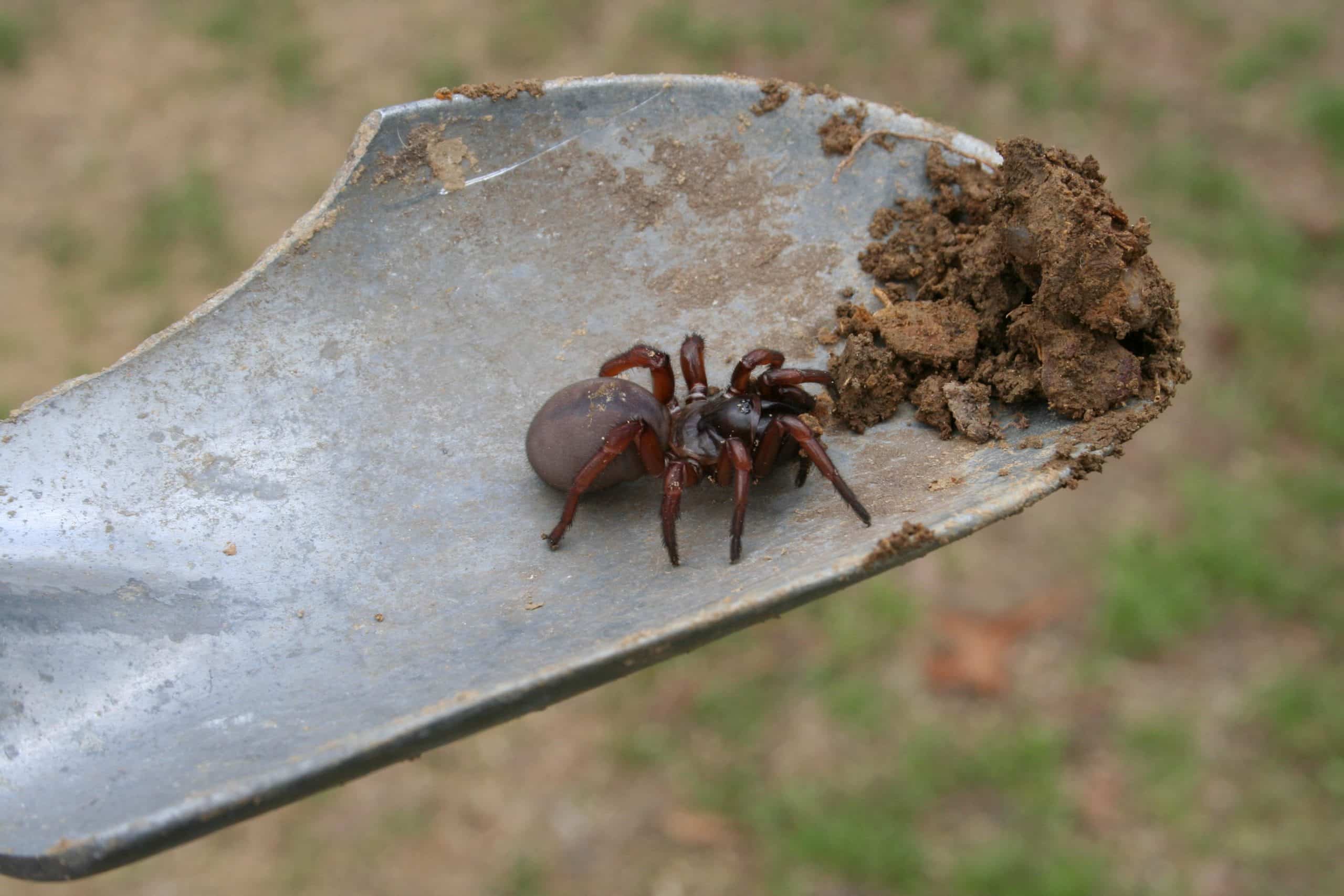
Source: bturnip.com
Average Size: 1.7 inches
Location Found: Australia
Danger: Someone should do a Tom & Jerry remake with the Mouse Spider as Tom – it would probably have a tragic ending. Joking aside, the Mouse Spider is called this because his rear end is furry and fluffy. They’re often confused for funnel web spiders because of their appearance and giant fangs, but they’re very shy and choose not to use their powerful venom on humans unless they’re provoked.
15. The Six-Eyed Sand Spider
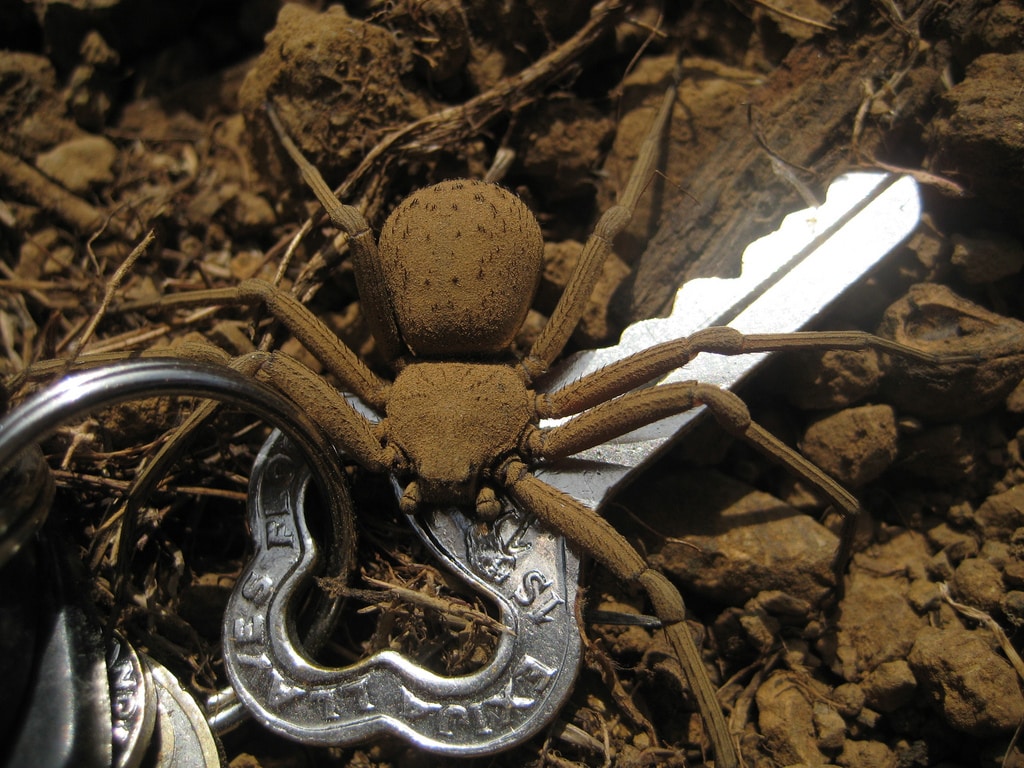
Source: realmonstrosities.com
Average Size: 2 inches
Location Found: Southern Africa
Danger: This spiders venom is one of the most potent in the world and unlike other neurotoxic spiders, there is currently no antivenom that exists for this spiders bite. While these are shy spiders, if provoked, they will bite and in some cases have been known to case massive haemorrhaging, necrosis, loss of limbs due to necrosis and in some cases death.
If you happen to visit any deserts in Southern Africa, be sure to look closely for this spider as it has learned to camouflage itself perfectly in the sand. That means you could rattle it accidentally and seal your faith!
Do you have goosebumps yet? You will when you realize that spiders have some pretty messed up super powers…
14. Cerbalus Aravaensis
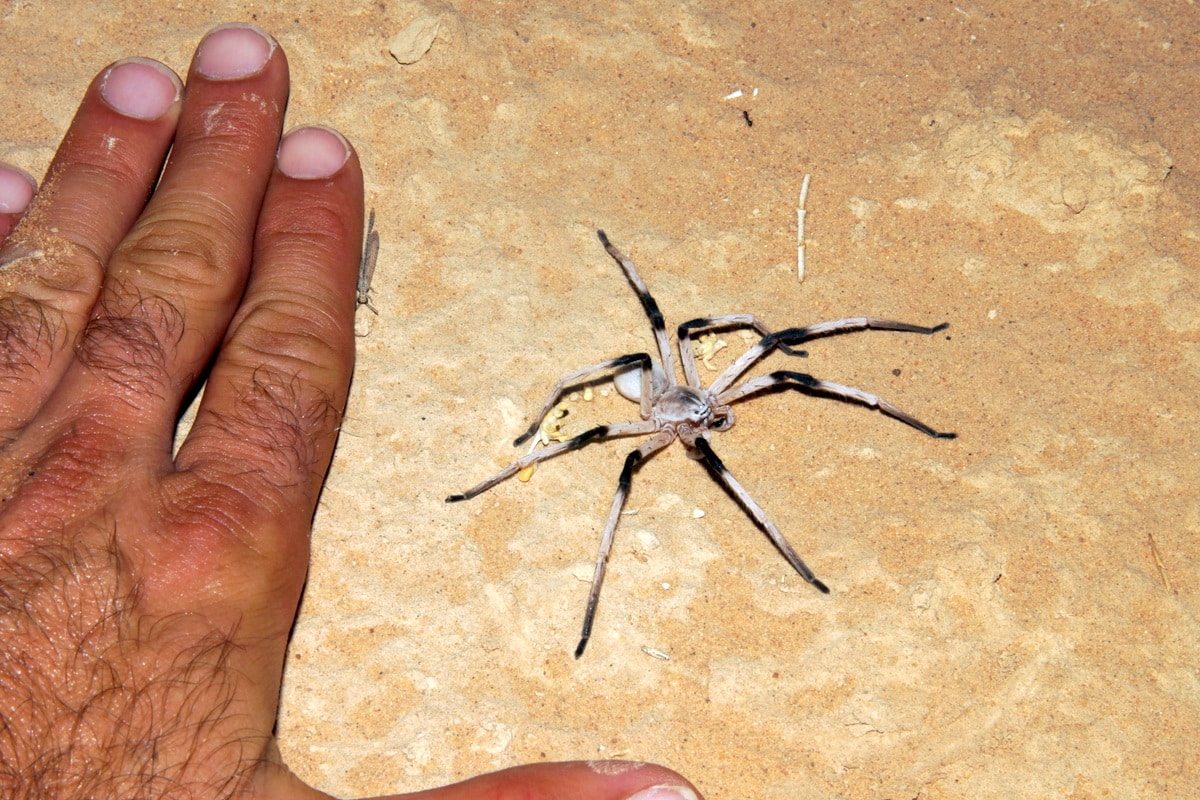
Source: reddit.com
Average Size: Male 2 inches, Female 5.5 inches
Location Found: Middle East
Danger: These spiders were discovered fairly recently in 2009. Unbelievably, these spiders are capable of walking over fiery hot sand that would scald the very skin on our human feet! Apparently the Cerbalus Aravaensis is right at home wandering the extremely hot sand in the deserts of the Middle East. Scientists don’t know whether these Huntsman-like spiders are poisonous to humans, but they do know that they like to paralyze and feast on lizards, small rodents and insects.
Speaking of feasting on lizards, did you know that some spiders are even capable of taking down serpents? This next one is a skilled snake wrangler…
13. The Golden Silk Orb
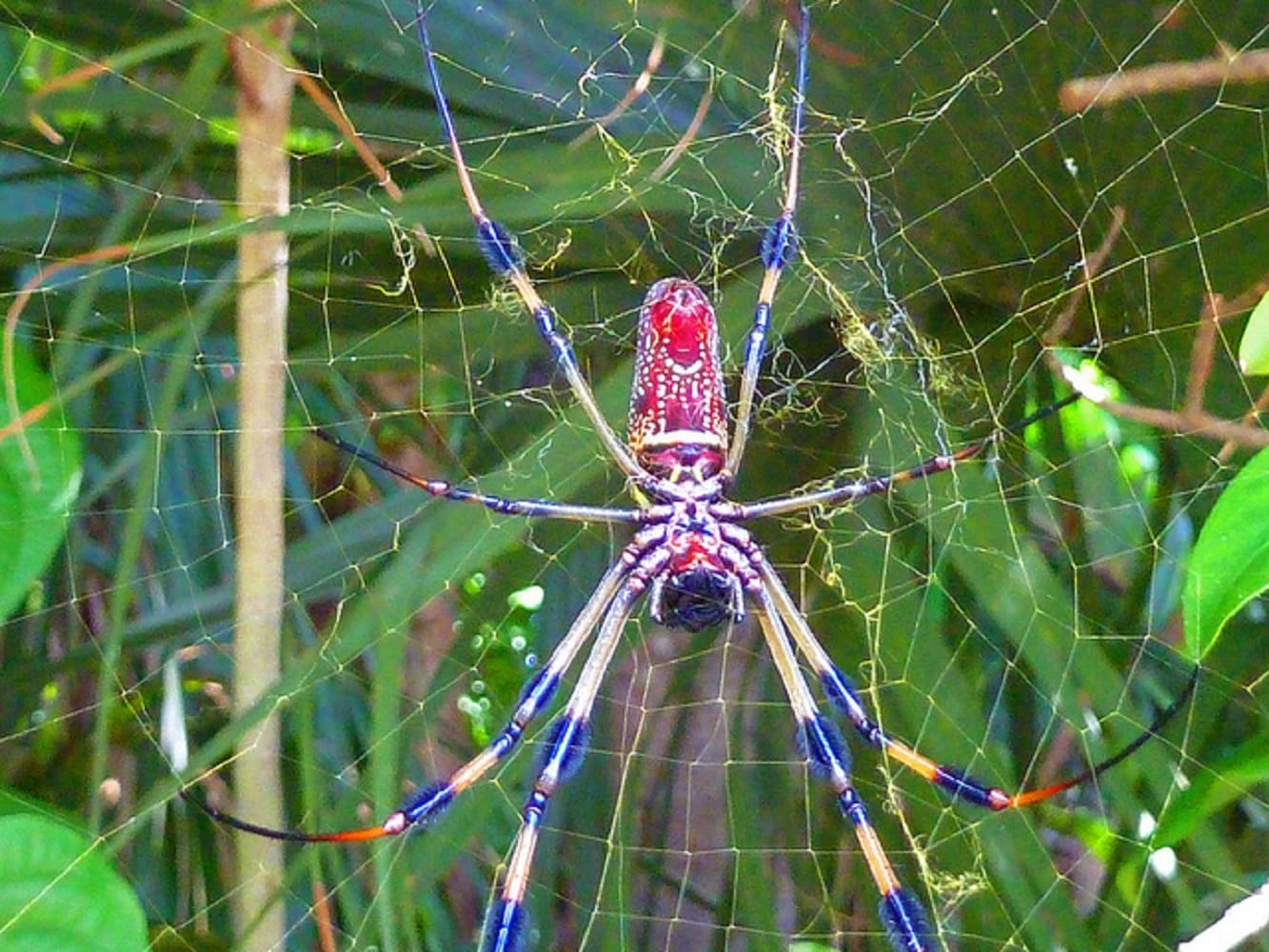
Source: listcrux.co
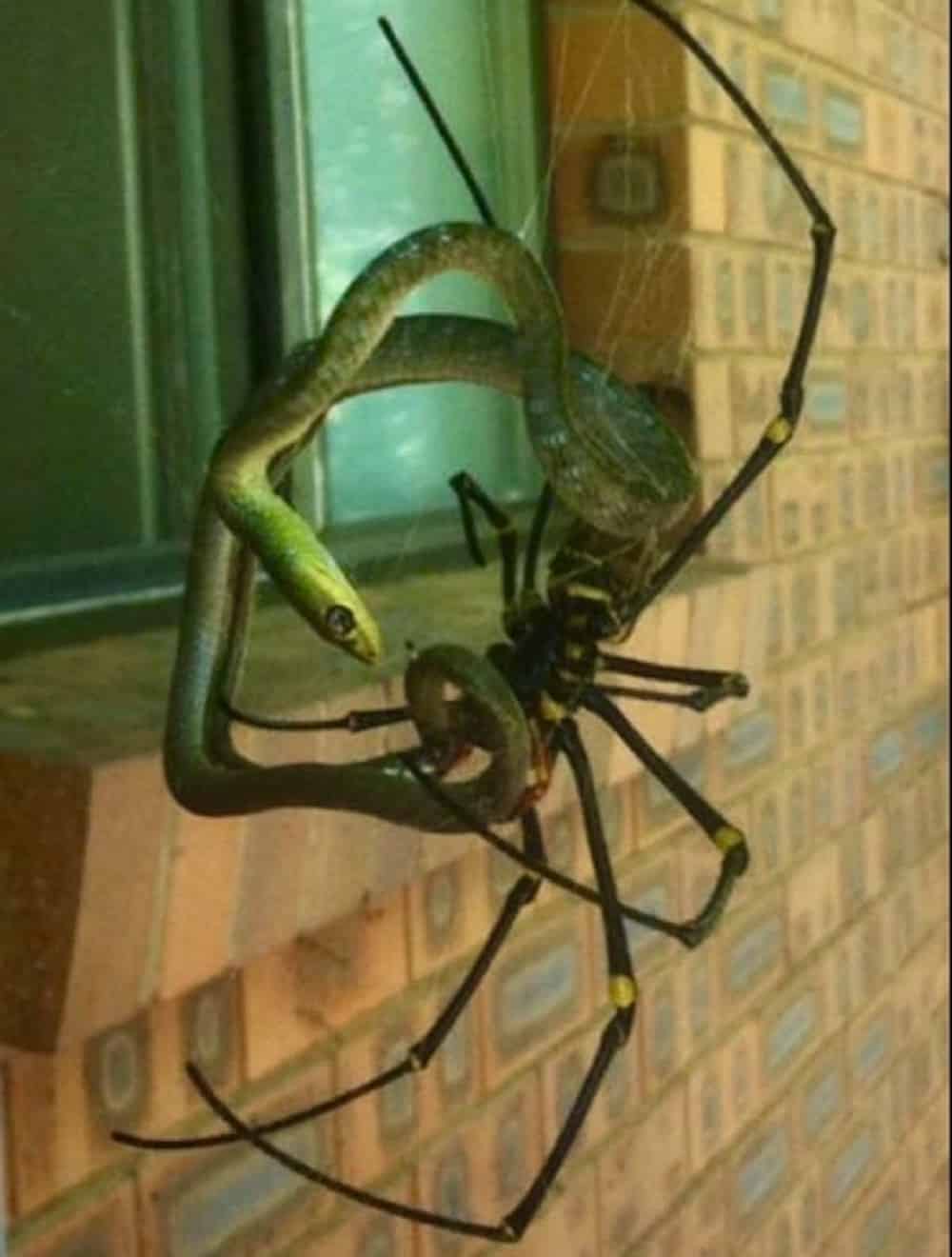
Source: alchetron.com
Average Size: 2.1 inches
Location Found: United States, Australia, Africa and Asia
Danger: If you’ve come this far, consider this colorful spider as a little break from the creepy ones. This alien-like spider produces golden silk to catch its prey. Oh and just so you know, they’re capable of jumping to take down snakes and birds. Just think about that for a while. They’re not too harmful to humans though, as a bite can produce some swelling and pain but the effects usually cease within 24 hours.
This spider may be one of the “prettier” spiders on our list for you today, but this next spider will make you squirm with horror when you see the size of its’ fangs!
12. The Northern Funnel Web Spider
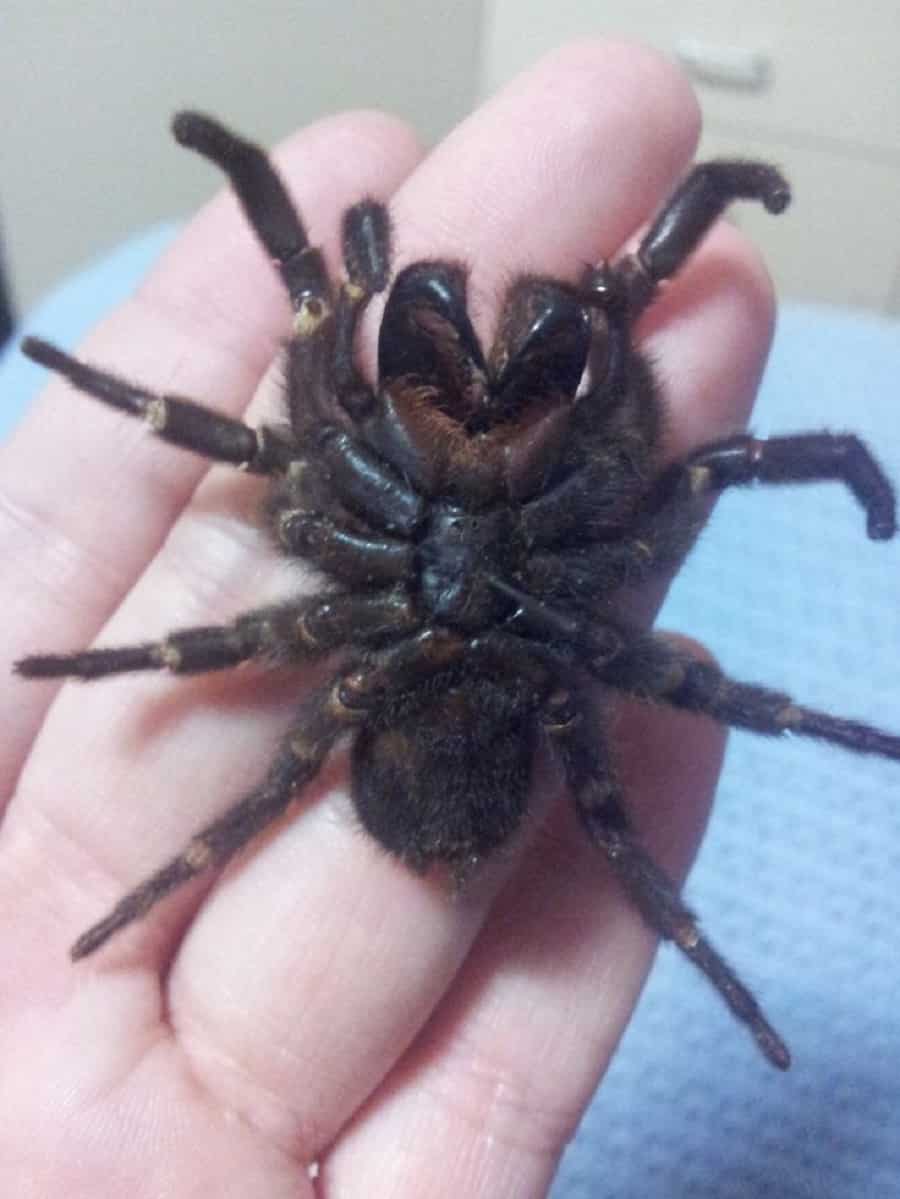
Source: pinterest.co.uk
Average Size: 2.3 inches
Location Found: Australia
Danger: The bite from this spider is extremely painful due to the sheer size of the fangs biting into the skin. The puncture marks from the fangs can be seen and swelling occurs rapidly. Like the venom from their relative the Sydney Funnel Web Spider, it is extremely poisonous causing the emergence of symptoms within minutes. Symptoms include, fever, vomiting, numbness or tingling, uncontrollable muscle spasms, increased heart rate and blood pressure, salivation, confusion, unconsciousness and even death. The onset for these symptoms can take anywhere from one half hour to several hours. In one severe case where a small child was bitten, death was reported to have occurred within 15 minutes.
If this one made you squirm, just wait until you see the MEGA SPIDER we have for you at #5!
11. The Sydney Funnel Web Spider
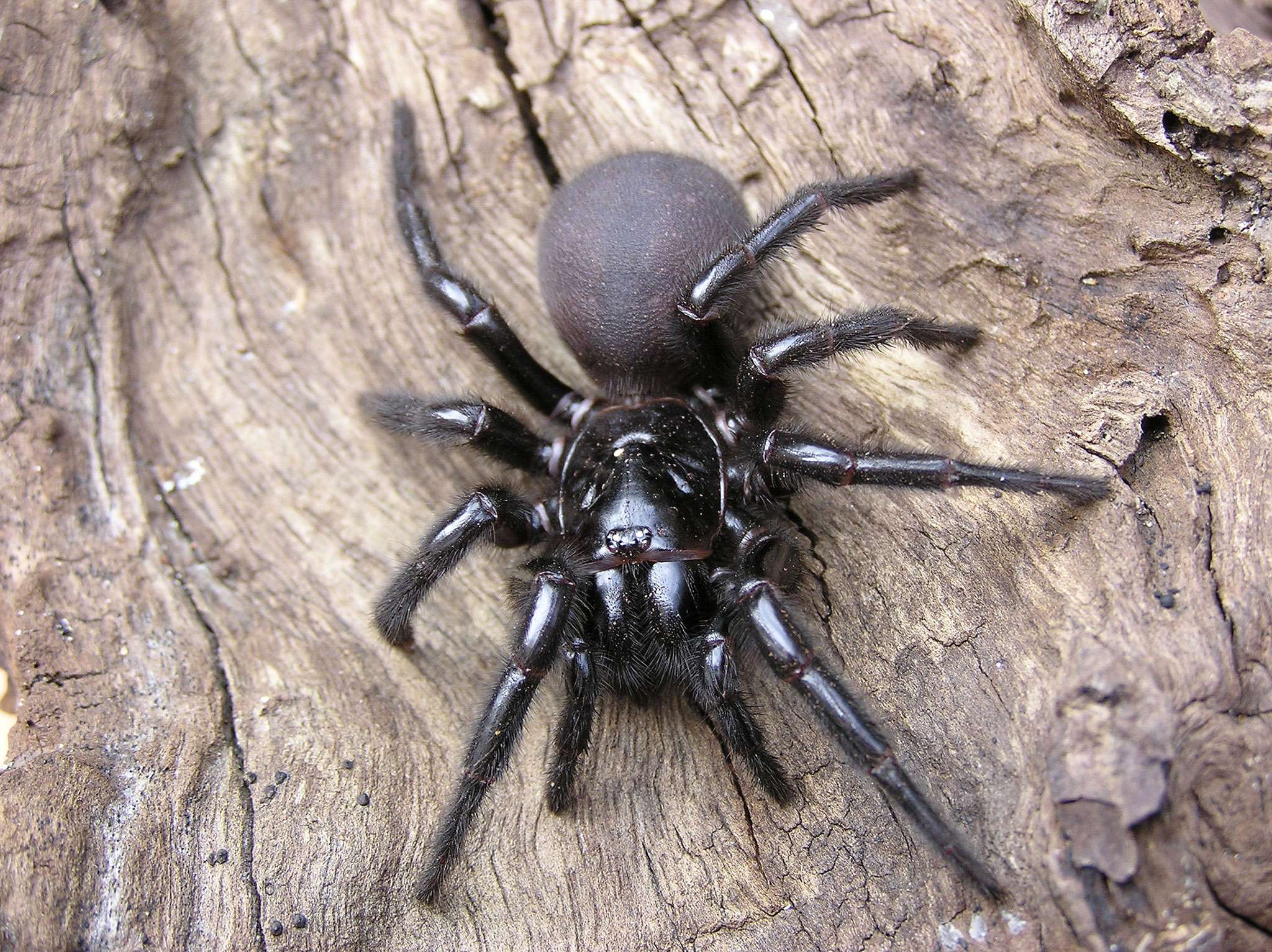
Source: reptilepark.com.au
Average Size: 3 inches
Location Found: Australia
Danger: The female Funnel Web spiders have a less potent venom and are less likely to bite than their male counterparts who have a strong venom containing atracotoxin which can be fatal to humans. The male spider is particularly defensive, often charging at his attacker while inflicting multiple bites with his massive fangs. The venom these spiders produce is so powerful that it can kill a human within one hour. If that isn’t enough to give you nightmares for weeks, these creepy spiders like to dwell in trees, so one could fall on your head or into your hoodie at any time!
Yep, another Aussie treat. The Sydney Funnel Web Spider is one the most dangerous tree climbing spiders on the planet, but thankfully one thing they can’t do is walk on water… Oh sorry, you didn’t know? That’s right, some SPIDERS WALK ON WATER!!!
10. The Dock Spider, A.K.A. The Wolf Spider
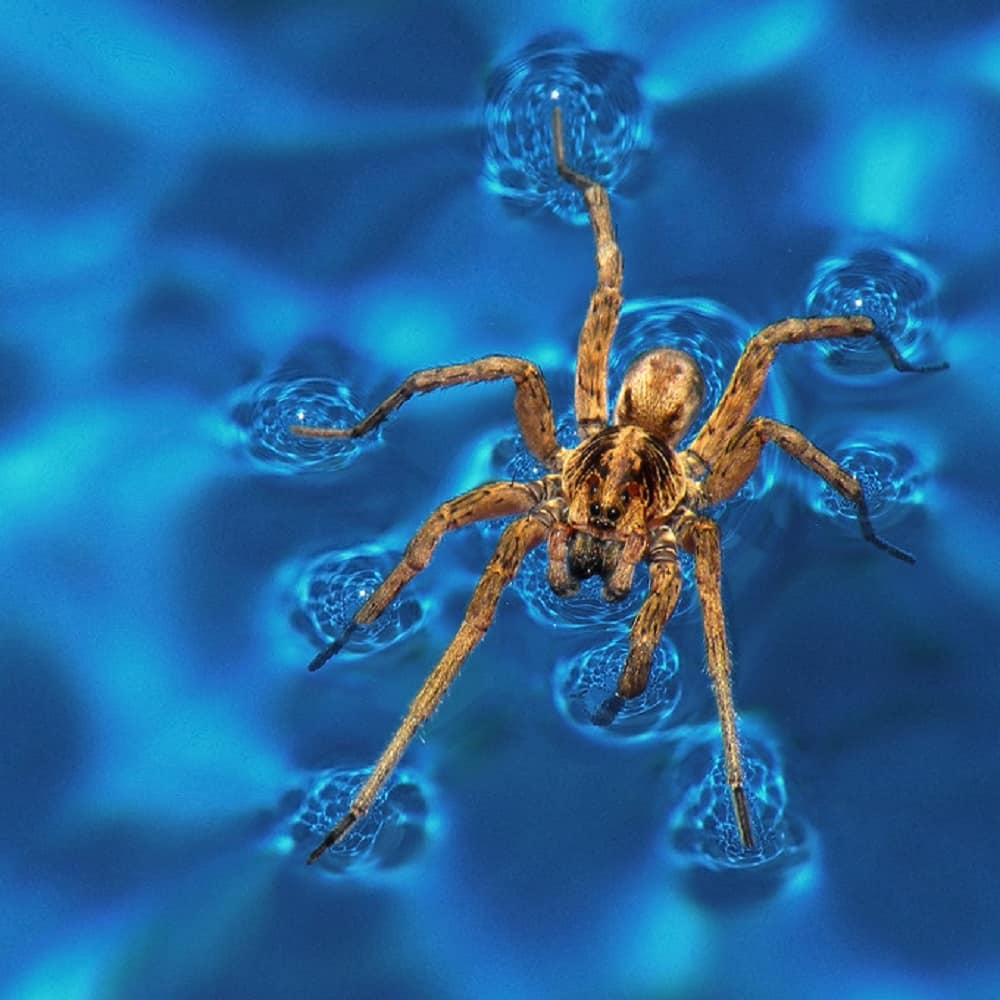
Source: viewbug.com
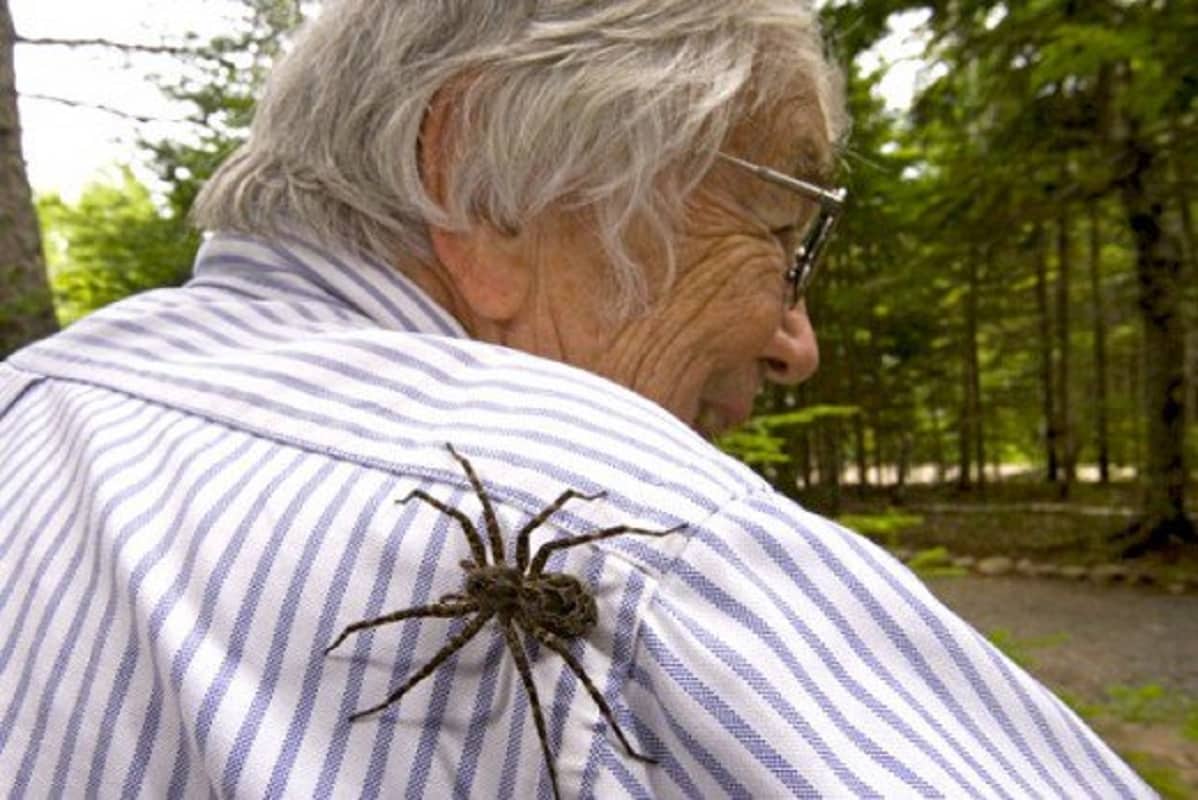 Source: hubpages.com
Source: hubpages.com
Average Size: 3.5 inches
Location Found: United States and Canada
Danger: This is indeed the most versatile spider that is not to be messed around with! The Dock Spider, otherwise known as Wolf Spider, is every sailor and cottage goers worst nightmare.
Imagine climbing up a ladder from the water and placing your hand next to a 3.5 inch furry spider. In a panic, you quickly flick it off the dock and into the water. Thinking your safe, you turn and realize that spider is running back full speed towards you, skimming the surface of the water with its’ eight nimble legs!
This spider is called the wolf spider for its’ furry appearance and the fact that it actually hunts and catches fish. It also carries around its’ egg sac in its’ fangs. Although, it does not often bite humans, the dock spider will if provoked or if she is protecting her eggs.
Phew, at least we don’t have to worry too much about this one taking down humans like this next one…
9. The Camel Spider
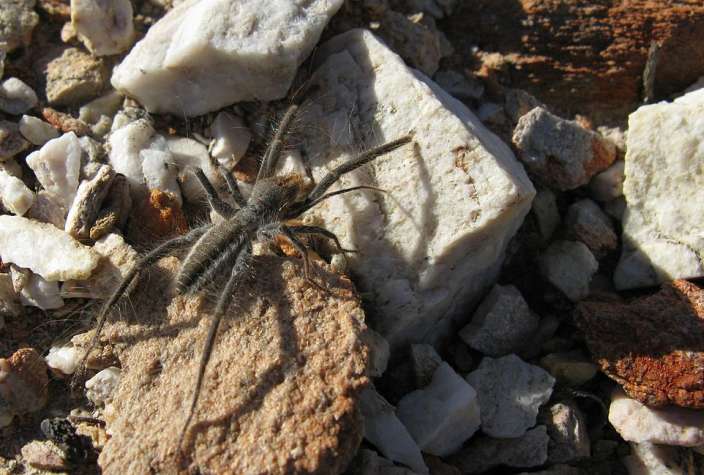
Source: conservationinstitute.org
Average Size: 6 inches
Location Found: Northern Africa, Middle East
Danger: The camel spider is believed to attack camels and humans that unexpectedly invade his territory. What’s truly scary is their speed coupled with their size. With legs up to 6 inches long, these spiders can run up to 30 mph and jump 3 feet in the air! Most days they prefer not to feast on humans, but on a diet of crickets, grasshoppers, and small rodents.
If it wasn’t one thing to fear spiders that run and jump like athletes, now we have to worry about tourist spiders. Don’t know what I mean? Well, like this next one, there are actually spiders that like to wander to different friggin’ continents!
8. The Brazilian Wandering Spider
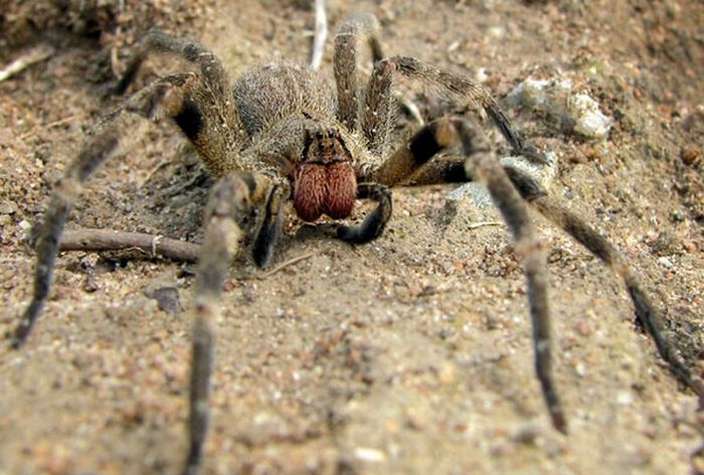
Source: conservationinstitute.org
Average Size: 6.1 inches
Location Found: Brazil
Danger: The Brazilian Wandering spider is a true menace. It is nearly 6 inches in leg length and packs a deadly venom. They mostly roam through jungles in Brazil, but they can also be found in food stores hiding among fruit or in crates. One was actually found in a store in Oklahoma, and was probably transferred from somewhere by riding on a banana. Yep, they are serious wanderers folks!
Ever seen a “face-sized” spider? You’re about to, if you dare…
7. Poecilotheria Rajaei, A.K.A. The “Face-Sized Tarantula”
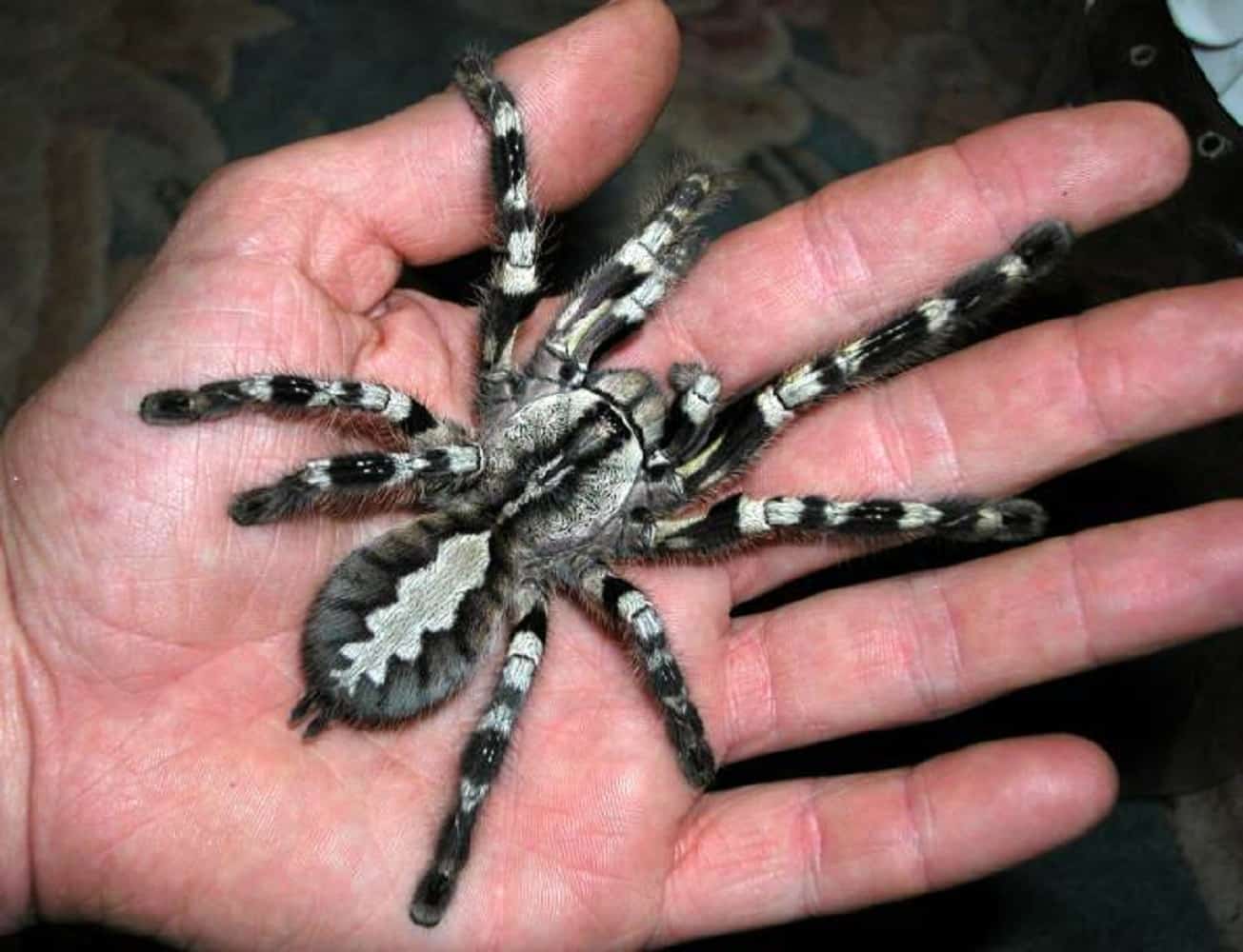
Source: smakterrarium.pl
Average Size: 8 inches
Location Found: Sri Lanka
Danger: Because of it’s almost unpronounceable name this spider is also known as the “face-sized tarantula”. The spider was named after a police officer who was navigating researchers through the thick Sri Lankan jungle in search of different spiders. Because of the damage being done to their natural habit, the spiders have been forced out of the jungles and are seeking refuge in abandoned buildings. They are not harmful to humans which is why many collectors seek them out.
If you think this spider is big, the next one is named after Hercules… That paints quite a picture doesn’t it?!
6. The Hercules Baboon Spider

Source: conservationinstitute.org
Average Size: 8.3 inches
Location Found: Eastern Africa
Danger: These spiders may look hairy and creepy, with their baboon finger-like 8 inch legs, however they are extremely rare. The last report of someone actually seeing one in the wild dates back to 1900. There has never been a report of a Hercules Baboon Spider bite to date. They tend to hide out in the grasslands of Eastern Africa and stick to an insect diet, but are known to be cannibals and will go after other spiders too.
If you thought this furry mammoth-like spider was big, you should see the next one. It’s called “The Birdeater” and it’s HUGE!!!
5. The Brazilian Salmon Pink Birdeater
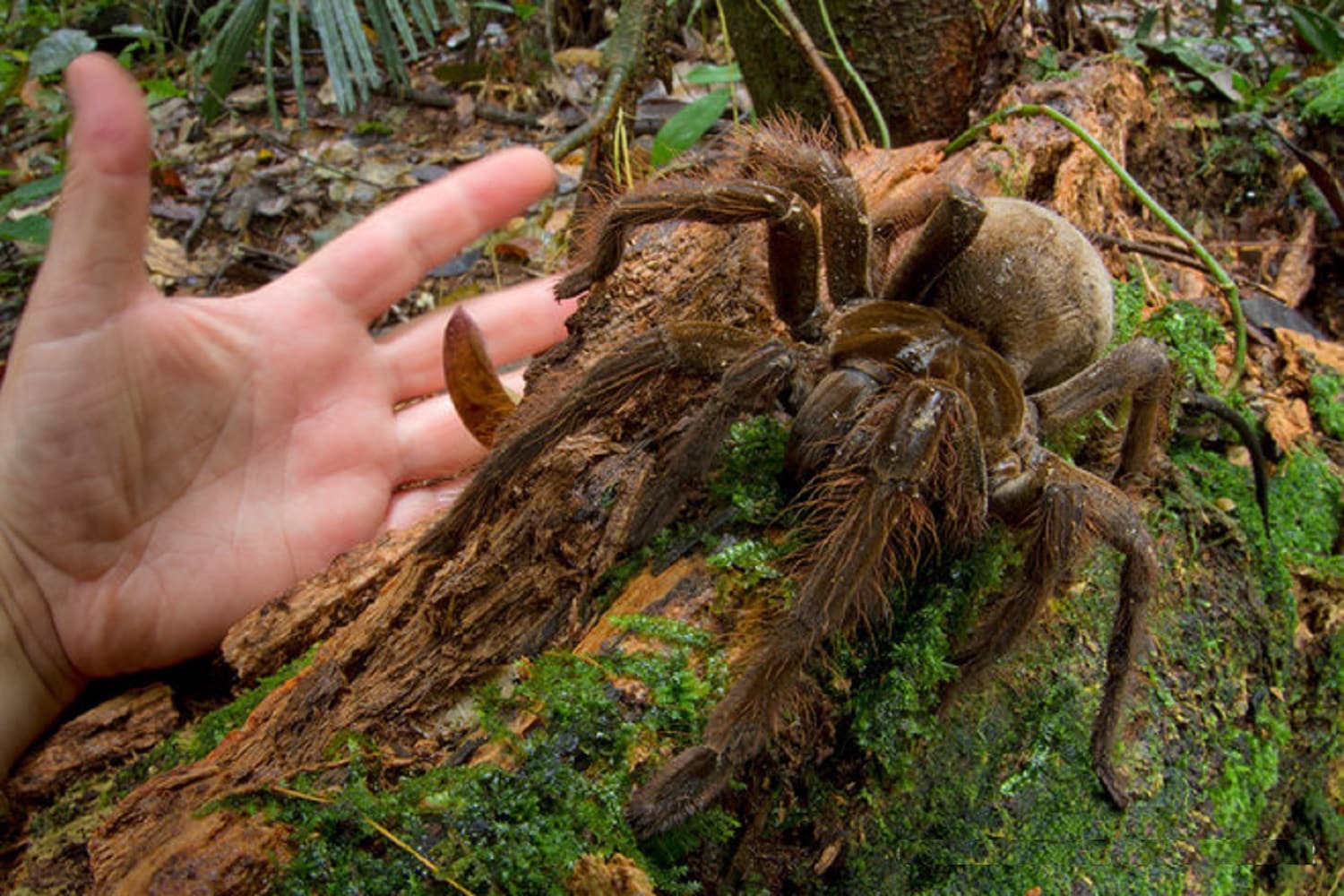
Source: livescience.com
Average Size: 10 inches
Location Found: Brazil
Danger: With a name like the Brazilian Salmon Pink Birdeater, you would expect that a bite from one of these humongous spiders would pack a devastating punch. However, they are another common spider to be kept by avid spider collectors. They are not poisonous and do not bite humans. Even if they do, their bite does not result in much pain or discomfort, unlike many of the others spiders on this list.
If you’re a collector of spiders, props to you. I thought I would grow to appreciate these creatures after seeing so many of them in my research, but this next one is enough to give me insomnia for a month…
4. The Colombian Giant Tarantula
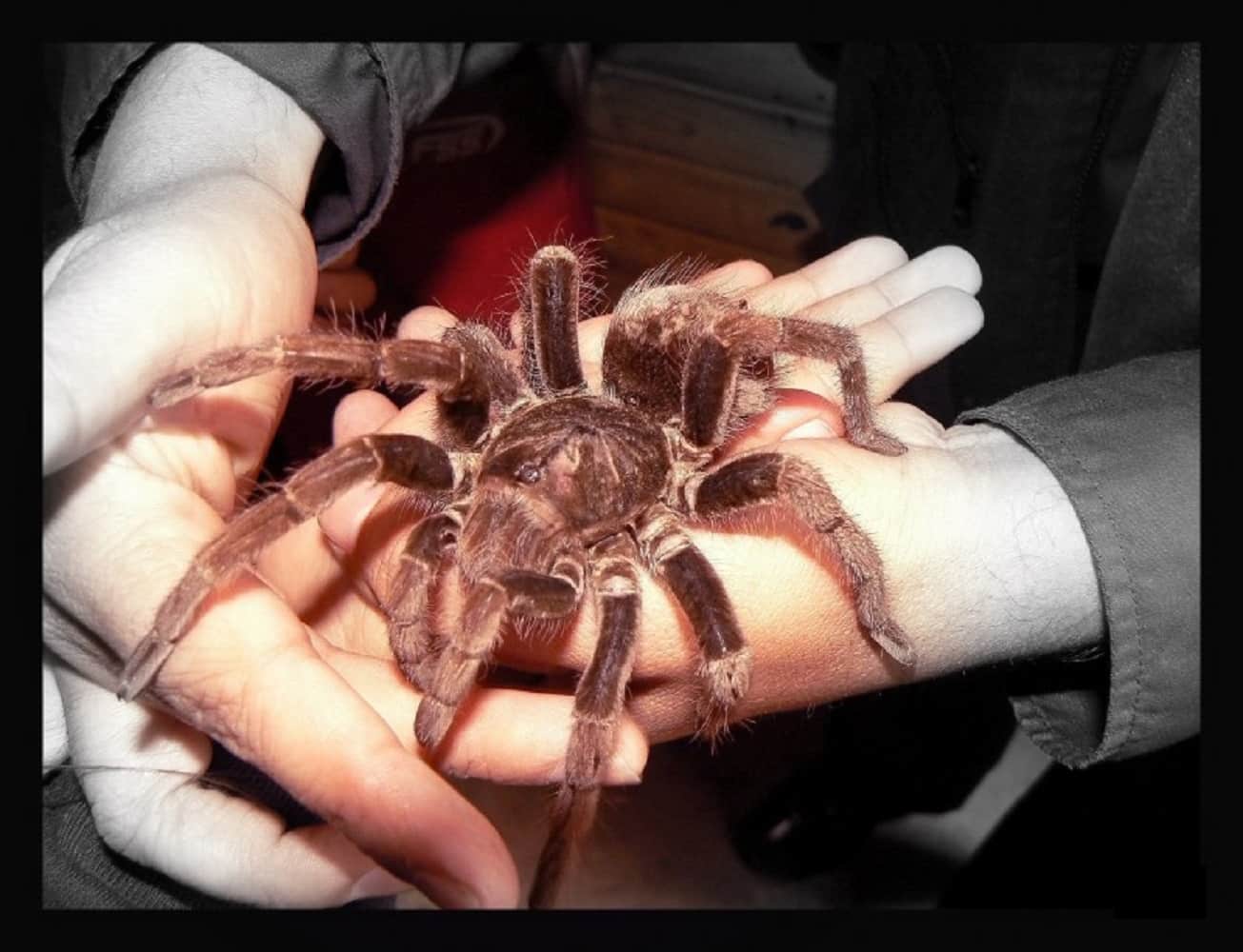
Source: fotosmundo.com
Average Size: 10.5 inches
Location Found: Colombia and Brazil
Danger: Like its friend the “Face-sized Tarantula” the Colombian Giant is not harmful to humans making it another desirable spider for collectors. They dine on small rodents, lizards, snakes and large insects in the Colombian and Brazilian rain forests. But if you go looking for one, you might not have much luck because they’re diggers who like to burrow underground so they’re not easily found in the wild.
If you ever considered traveling to South America, we’re very sorry if we’ve changed your mind. This next spider will probably reinforce the thought about traveling elsewhere for your holidays…
3. The Grammostola Anthracina

Source: youtube.com
Average Size: 11 inches
Location Found: South America
Danger: These big boys are one of the most popular tarantulas among spider collectors. While they are nightmare inducing, they are not harmful to humans but are to insects, small rodents, lizards and snakes.
At least these ones don’t run sideways and backwards. That would be like something out of an exorcist movie! Or, something this next spider does quite well…
2. The Giant Huntsman Spider
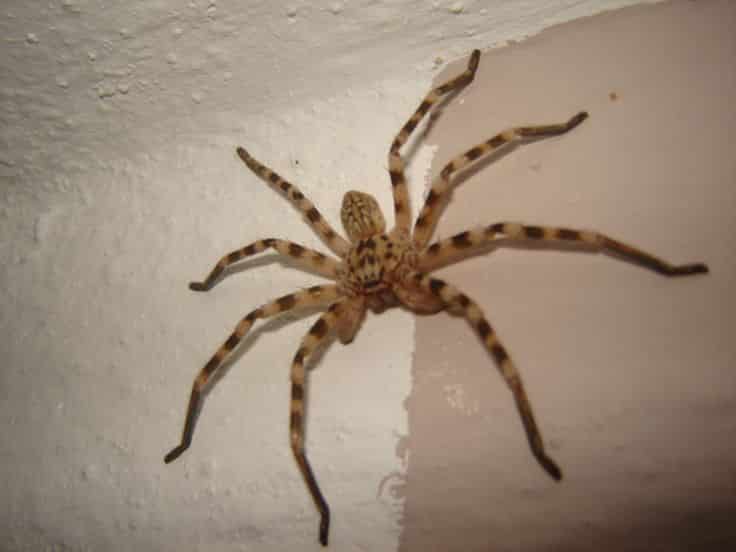
Source: pinterest.com
Average Size: 12 inches
Location Found: Australia
Danger: Of course it’s no surprise this spider comes from Australia – home of all the other most monstrous spiders on the planet! With a 12 inch leg span it’s one of the biggest spiders in the world. These gigantic spiders are mostly found in warm tropical environments and like to hide alongside houses, under rocks or in caves. They are called the Huntsman due to their speed and agility. They are able to hunt down prey by running sideways, backwards and forwards. Although they are not poisonous or harmful to humans, their bites can be extremely painful.
Why do such creatures exist, if not to just scare the living daylights out of us humans?!
Just when you thought there couldn’t possibly be anymore giant bird consuming spiders on this plant, there’s more… There’s always more…
1. The Goliath Bird-Eating Spider

Source: weneedfun.com
Average Size: 12.2 inches
Location Found: South America
Danger: The picture tells it all really. The Goliath spider is a massive clump of scary with legs. Despite it’s name, it actually hunts down insects, rodents and other small creatures such as birds and lizards. Their venom is harmless, but their fangs can pierce through human skin and up to 1.5 inches deep.
If you’ve made it here, CONGRATULATIONS!!! You are one very brave soul or maybe you’re just as twisted as we are for browsing through this stuff for the past 1o minutes. Either way, we’re glad we grabbed your attention and hope you enjoyed our eight-legged friends!
Want more? We’ve got some more spiders lined up for you. These may not be as big as the ones you’ve seen so far, but this next one is certainly one of the most lethal in the world and resides in the U.S.!
Click NEXT SLIDE to check them out… if you dare!
The Black Widow
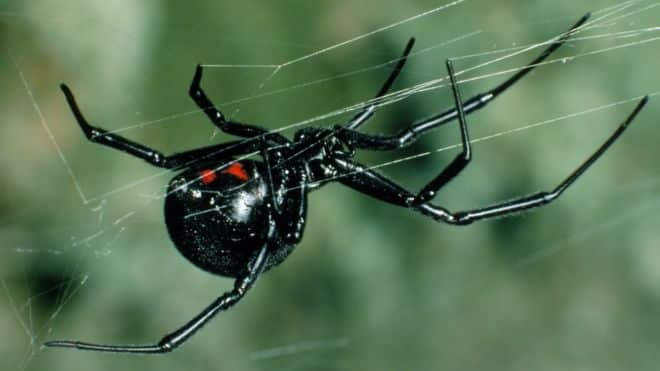
Source: bbc.com
Average Size: 1.5 inches
Location Found: United States and Canada
Danger: Black widows are truly terrifying, especially the females. The female black widow kills the male after they “consummate” their relationship – if you know what I mean. A female Black Widow’s venom is 3x more powerful than a rattlesnake and even the male black widow spider, which makes the males pretty defenseless in a one on one scenario. Why they don’t keep it in their pants is beyond me.
Did you know that some spiders prefer to live under water? It’s true, and they can actually breath below water too! We’re about to tell you just how they manage this…
The Diving Bell Spider
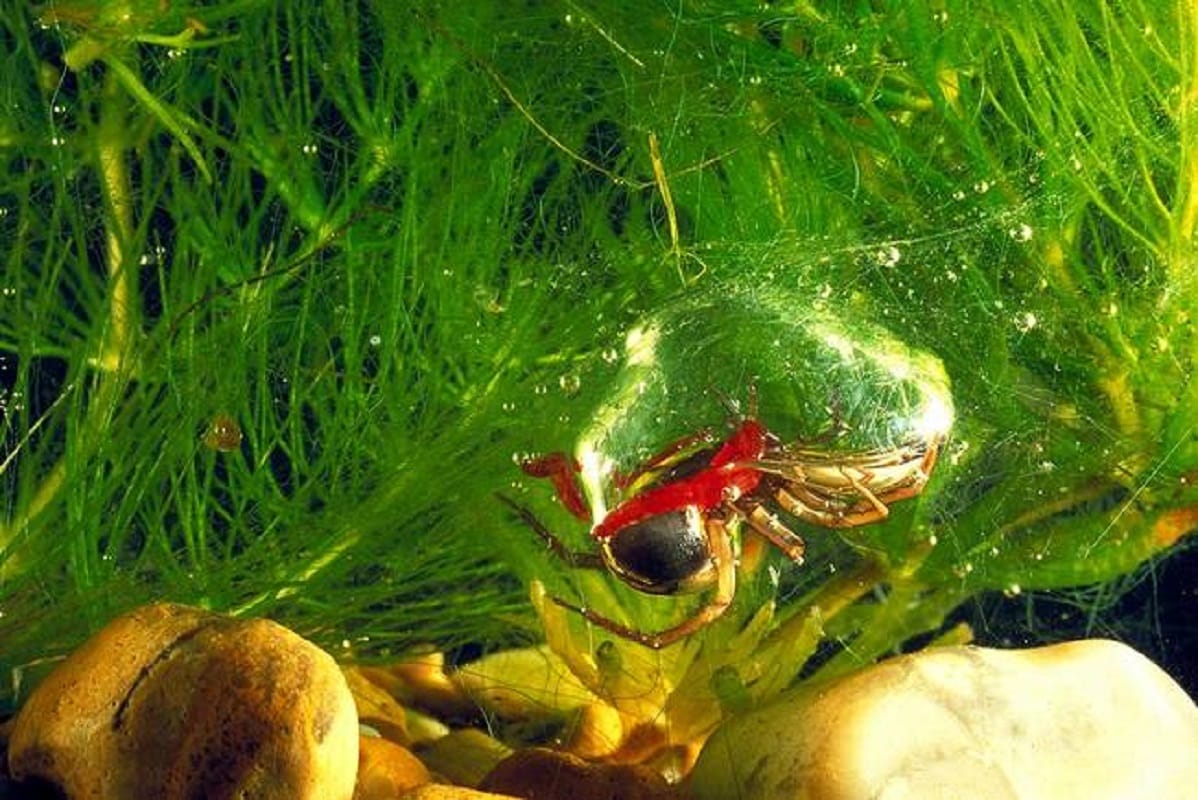
Source: treehugger.com
Average Size: 0.5 inch
Location Found: Northern Siberia, Central and Northern Europe
Danger: The Diving Bell spider is an aquatic spider that spends most of it’s time under cold water. It does have to come to the surface occasionally to renew their oxygen supplies that they keep in their air bubble or “bell”. That’s when diving bell spider-human encounters happen, and their bite is usually excruciatingly painful and inflammatory.
That’s right, not even the water is safe guys. Along with checking the water before you dive in, you should always check your clothing, footwear, and bed sheets for spiders like this next one…
The Brown Recluse Spider
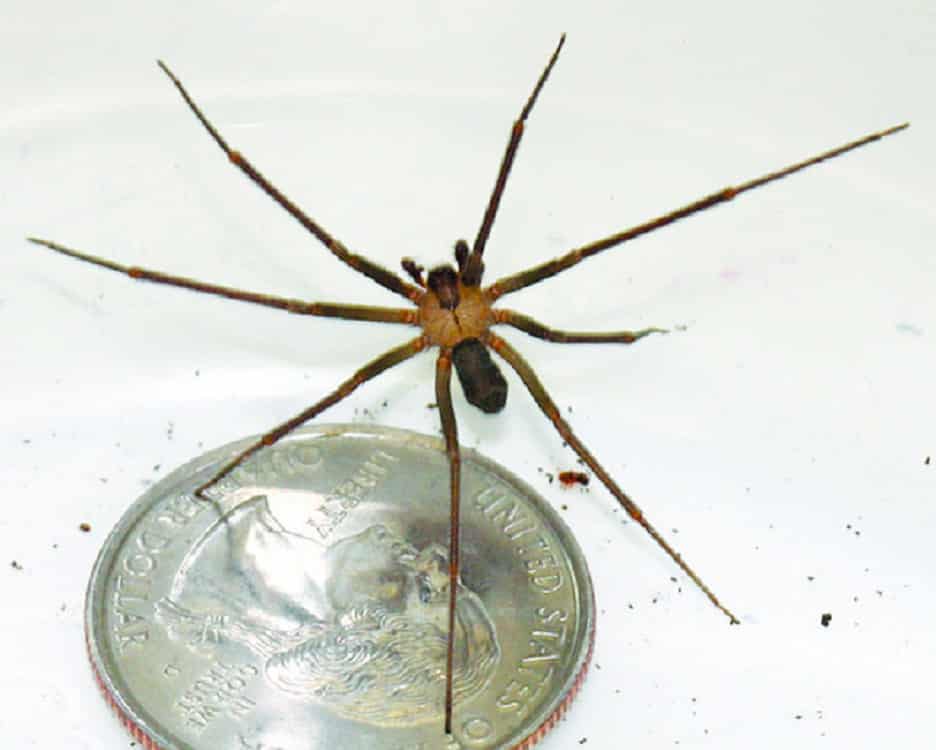
Source: oocities.org
Average Size: 0.6 inch
Location Found: Midwestern and Southern United States
Danger: Also known as “violin” or “fiddleback spider”, the brown recluse likes to hide in clothes, footwear, bed sheets and other places you’d never want to find a spider in. These spiders are highly venomous and will attach if startled or provoked. Most times their bite will produce a small swollen, pimple like bump on the skin, however in some extreme cases they have been known to create large, necrotic lesions where the surrounding skin tissue dies.
It’s always good practice to be observant of your surroundings, especially when spiders like these ones live in close proximity. But who knew that spiders could even camouflage themselves as fallen leaves and twigs?? This one coming up next can do that very thing!
The Scorpion-Tailed Spider
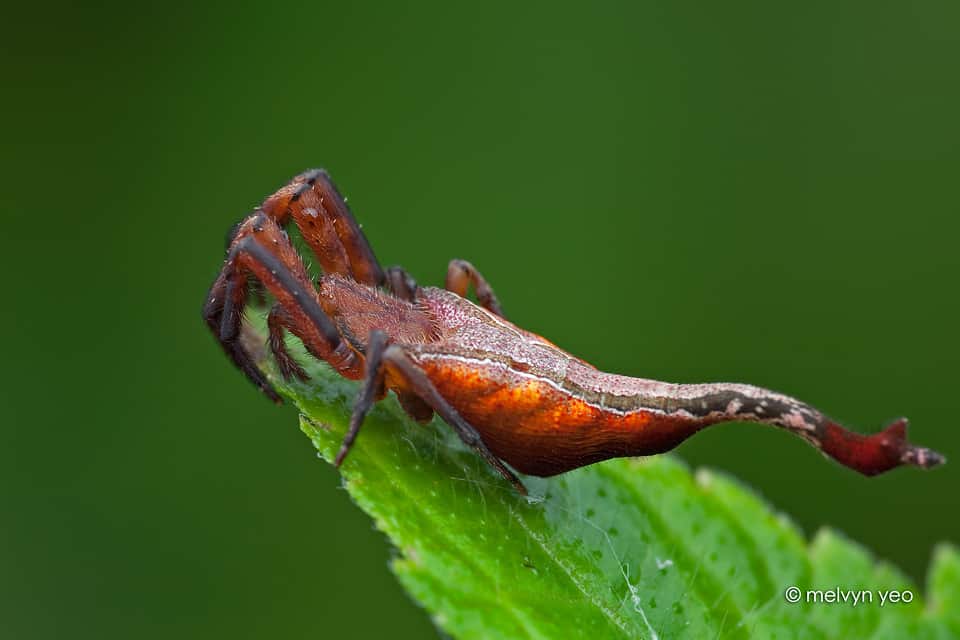
Source: melvynyeo.deviantart.com
Average Size: 0.7 inch
Location Found: Australia
Danger: A spider and scorpion combo?! Just when you think it couldn’t get any worse! While the scorpion shaped tail is actually harmless and bites from these spiders are quite rare, they can inflict pain and swelling if they are provoked to attack. They often mimic fallen leaves or twigs to capture their prey.